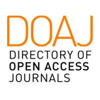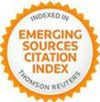Abstract
Infectious diseases have long posed an important threat to global health, causing significant morbidity and mortality worldwide and requiring constant innovation in treatment approaches. The perception of microbes has considerably changed since the recognition of their pathogenic potential in the 19th century. Recent research has shed light on the role of human microbiome, its interplay with animal and environmental microbiomes and dysbiosis in determining the susceptibility, severity, and outcome of infectious diseases. This article addresses the intricate relationship between the microbiome and infectious diseases, highlighting how biodiversity loss can impact microbial balance and human health. It reveals the role of microbiome as a crucial mediator of host-pathogen interactions and explore the remarkable potential of modulating this dynamic ecosystem to develop innovative personalised treatment strategies that could optimize the management of infectious diseases.
Keywords
Full Text:
PDFDOI: http://dx.doi.org/10.2423/i22394303v15Sp71
References
Alves, M. C. S., Rego, M. S., Cabral da Silva, M. C., et al. (2025). Gut Microbiota and COVID-19: Unraveling the Gut-Lung Axis and Immunomodulatory Therapies. ACS Infectious Diseases, 11(7), 1844-1853.
Belvoncíkova, P., & Gardlik, L. (2025). Faecal microbiota transplantation for urinary tract infections. Clinical Microbiology and Infection.
Biliotti, E. (2024). Biodiversity and Human Microbiota in Health and Disease. SCIRES-IT - SCIentific RESearch and Information Technology, 14(Special Issue), 25-30. http://dx.doi.org/10.2423/i22394303v14Sp25
Carding, S., Verbeke, K., Vipond, D. T., et al. (2015). Dysbiosis of the gut microbiota in disease. Microbial Ecology in Health and Disease, 26, 26191.
Chai, Y., Li, M., Deng, X., et al. (2025). Gut microbiota and tuberculosis infection: interaction and therapeutic potential. Gut Microbes, 17(1).
Eribo, O. A., Mumin, P., Guler, R., et al. (2020). The gut microbiome in tuberculosis susceptibility and treatment response: guilty or not guilty? Cellular and Molecular Life Sciences, 77, 1497–1509.
Flores-Mireles, A. L., Walker, J. N., Caparon, M., & Hultgren, S. J. (2015). Urinary tract infections: Epidemiology, mechanisms of infection and treatment options. Nature Reviews Microbiology, 13, 269–284.
Grimes, D.J. (2006). Koch’s postulates—then and now. Microbe Magazine, 1(5), 223–228.
Haraoui, L.P., & Blaser, M.J. (2023). The Microbiome and Infectious Diseases. Clinical Infectious Diseases, 77, S441-S446.
Huang, R., Liu, Z., Sun, T., et al. (2024). Cervicovaginal microbiome, high-risk HPV infection and cervical cancer: Mechanisms and therapeutic potential. Microbiological Research, 287, 127857.
Koch, R. (1876). Die Ätiologie der milzbrand-krankheit, begründet auf die entwicklungsgeschichte des Bacillus anthracis. Cohns Beitr. Biol. Pflanzen 2, 277–310.
Łaniewski, P., Ilhan, Z. E., & Herbst-Kralovetz, M. M. (2020). The microbiome and gynaecological cancer development, prevention and therapy. Nature Reviews Urology, 17(4), 232–250.
Libertucci, J., & Young, V.B. (2019). The role of the microbiota in infectious diseases. Nature Microbiology, 4(1), 35-45. https://doi.org/10.1038/s41564-018-0278-4
Maciel-Fiuza, M. F., Muller, G. C., Campos, D. M. S., et al. (2023). Role of gut microbiota in infectious and inflammatory diseases. Frontiers in Microbiology, 14, 1098386.
Magruder, M., Sholi, A. N., Gong, C., Zhang, L., Edusei, E., Huang, J., et al. (2019). Gut uropathogen abundance is a risk factor for development of bacteriuria and urinary tract infection. Nature Communications, 10, 5521.
McMillan, A. S., & Theriot, C. M. (2024). Bile acids impact the microbiota, host, and C. difficile dynamics providing insight into mechanisms of efficacy of FMTs and microbiota-focused therapeutics. Gut Microbes, 16(1), 2393766.
Moffatt, M. F, & Cookson, W.O. (2017) The lung microbiome in health and disease. Clinical Medicine, 17(6), 525–529. https://doi.org/10.7861/clinmedicine.17-6-525
Muhummed, A. M., Lanker, K. C., Yersin, S., & Zinsstag, J. (2025). One Health, One Microbiome. Microbiome, 13(1), 216. https://doi.org/10.1186/s40168-025-02231-6
Narendrakumar, L., & Ray, A. (2022). Respiratory tract microbiome and pneumonia. In Progress in Molecular Biology and Translational Science, 192(1), 97–124.
Proal, A. D., VanElzakker, M. B., Aleman, S., et al. (2023). SARS-CoV-2 Reservoir in Post-Acute Sequelae of COVID-19 (PASC). Nature Immunology, 24(10), 1616–1627.
Ren, Z., Wang, H., Cui, G., et al. (2021). Alterations in the Human Oral and Gut Microbiomes and Lipidomics in COVID-19. Gut, 70(7), 1253–1265.
Ridlon, J. M., & Gaskin, H. R. (2024). Another renaissance for bile acid gastrointestinal microbiology. Nature Reviews Gastroenterology & Hepatology, 21, 348–364.
Seekatz, A. M., & Abt, M. C. (2025). Advances in Understanding the Pathogenesis of Clostridioides difficile Infection. Infectious Disease Clinics of North America, 39, 761–779.
Vance, J., & Turner, N. A. (2025). Infection Prevention Approaches for Clostridioides difficile. Infectious Disease Clinics of North America, 39(4), 685–707.
Van Seventer, J., & Hochberg, N. (2016). Principles of infectious diseases: transmission, diagnosis, prevention, and control. In International Encyclopedia of Public Health (Vol. 5, 2nd ed.), 22–39.
Wilcox, M. H., Gerding, D. M., Poxton, I. R., et al. (2017). Bezlotoxumab for Prevention of Recurrent Clostridium difficile Infection. New England Journal of Medicine, 376(4), 305–317.
Woo, S., Park, S. Y., Kim, Y., et al. (2020). The dynamics of respiratory microbiota during mechanical ventilation in patients with pneumonia. Journal of Clinical Medicine, 9(3), 638.
Zakharkina, T., Martin-Loeches, I., Matamoros, S., et al. (2017). The dynamics of the pulmonary microbiome during mechanical ventilation in the intensive care unit and the association with occurrence of pneumonia. Thorax, 72(9), 803–810.
Zollner, A., Meyer, M., Jukic, A., et al. (2024). The Intestine in Acute and Long COVID: Pathophysiological Insights and Key Lessons. Yale Journal of Biology and Medicine, 97(4), 447–462.
Zuo, T., Zhang, F., Lui, G., et al. (2020). Alterations in Gut Microbiota of Patients With COVID-19 During Time of Hospitalization. Gastroenterology, 159(3), 944–955
Article Metrics
Metrics powered by PLOS ALM
Refbacks
- There are currently no refbacks.
Copyright (c) 2025 Elisa Biliotti

This work is licensed under a Creative Commons Attribution-NonCommercial-NoDerivatives 4.0 International License.
SCIRES-IT, e-ISSN 2239-4303
Journal founded by Virginia Valzano





